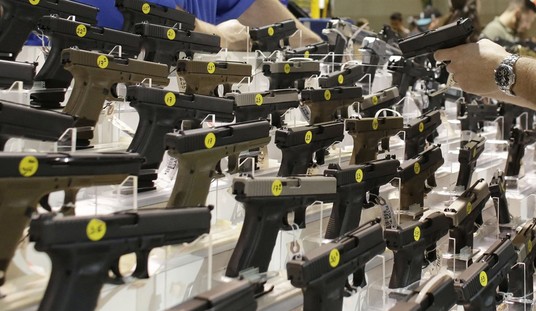An Oklahoma man who showed up at his ex-wife’s house drunk and refused to leave, forcing her to call police. When officers arrived, the ex-husband, Dominic Rollice, retreated to a garage and told the three officers that “one of us is going to die tonight” before reaching for a claw hammer on a pegboard rack behind him.

It went downhill quickly from there.
Tahlequah Police Chief Nate King on Friday released body camera footage that captured a fatal shooting of 49-year-old Dominic Rollice on Friday, Aug. 12.
The entire video is more than 15 minutes long. The first 30 seconds does not include audio because the camera had not been turned on until about 30 seconds into the clip.
Video shows Officer Josh Girdner first approach Rollice in the garage of Rollice’s ex-wife, on East Shawnee Terrace. Rollice claims in the video that he is in his own home, but King said Rollice did not live there. Audio of a police call by his ex-wife was also released Friday.
She claimed Rollice was intoxicated and refusing to leave. Video shows Rollice retrieve a claw hammer and raise it above his head before two of the Tahlequah officers – Lt. Brandon Vick and Girdner – fired their weapons at him a total of six times. Officer Chase Reed deployed his Taser on Rollice at the same moment the shots were fired, King said.
The chief said Friday that his officers, in his opinion, followed protocol and he feels they were justified in the shooting. The Oklahoma State Bureau of Investigation is probing the incident and will provide findings to the district attorney, who will determine whether the shooting was justified.
The three officers repeatedly told Rollice to drop the hammer. He repeatedly responded “no.”
Officer Chase Reed (left) fired his taser as Rollice raised the hammer and took a step towards the officers. Because Rollice raised the hammer as if to swing or throw it and stepped forward, Lt. Brandon Vick (right) and Officer Josh Girdner (center, filming with body camera) fired a total of six shots. Rollice dropped into a crouch, and then fell backwards.
Officers quickly cuffed Rollice and Officer Girdner stayed with him, bring him back with CPR at least once after he stopped breathing, but there simply wasn’t anything they could do to save him at that point.

Mr. Rollice had presented Lt. Vick with a broadside shot and Officer Girdner with a nearly quartering shot, which are all but impossible to survive if shots are placed accurately at high chest level, as modern hollowpoint ammunition is designed to penetrate 12″-15″ inches and Rollice was almost certainly hit in both lungs based on the location of the officers when they fired and the angle of Rollice’s body.
In hindsight it’s a shame that Officer Reed could not get his taser into action more quickly, but the three officers had no way of knowing that Rollice was going to start advancing upon them and raise his weapon, and even if Officer Reed had fired his taser it may not have worked, just as the taser used on Alton Sterling in Baton Rouge had no effect upon him at all.
* * *
I’m not a fan of the body cameras being used by many agencies, that have a 30-second “recall” mode, but otherwise don’t record audio until the moment an officer pushes the button to record the entire event in audio and video once he realizes that he’s in an incident worth recording.
Like the Paul O’Neal shooting in Chicago and several other incidents involving body cameras that we’ve covered in the past year, I think that cameras that record an entire shift in a 12-hour loop at a time would be far more beneficial to protect officers and give the public confidence that everything is being recorded.
All three officers heard and separately reported hearing Rollice make the threat that “one of us is going to die tonight,” but that statement was made several seconds before Officer Girdner’s camera began recording audio.








Join the conversation as a VIP Member